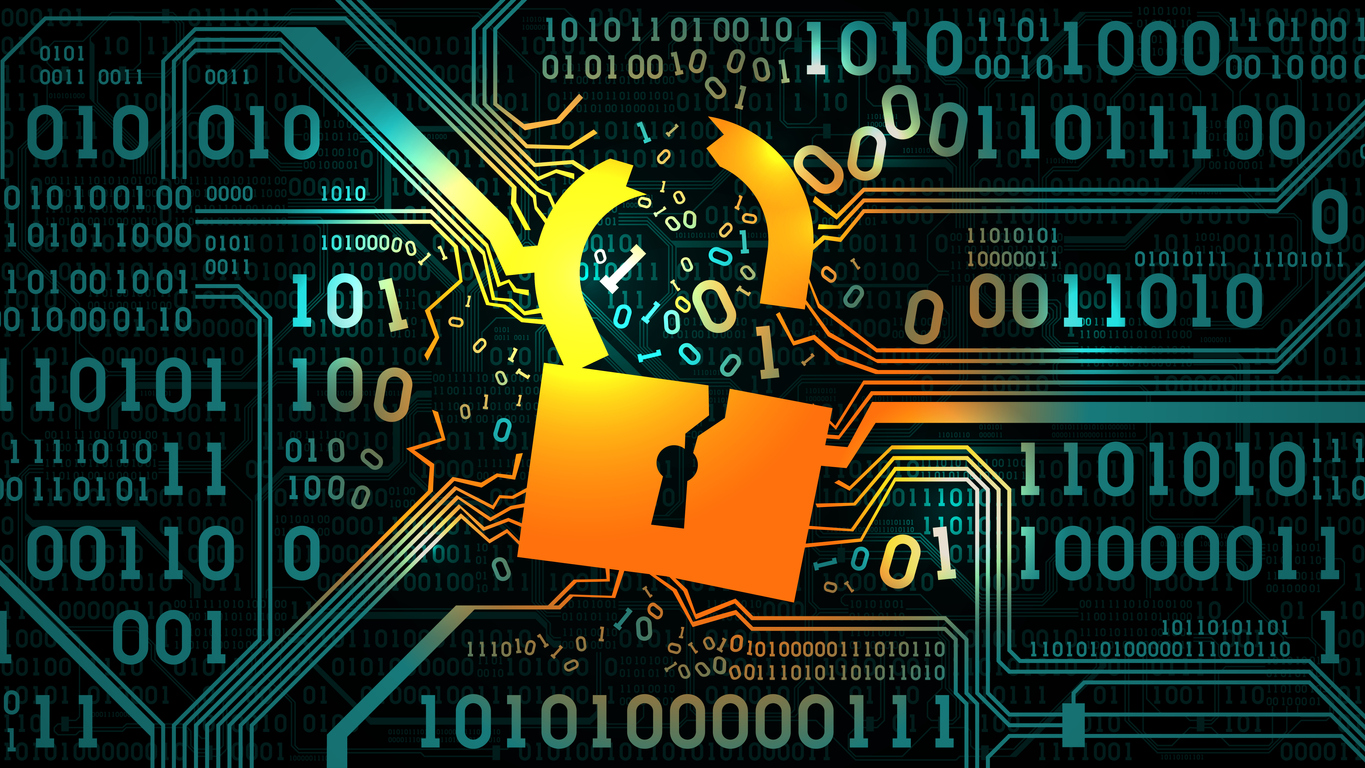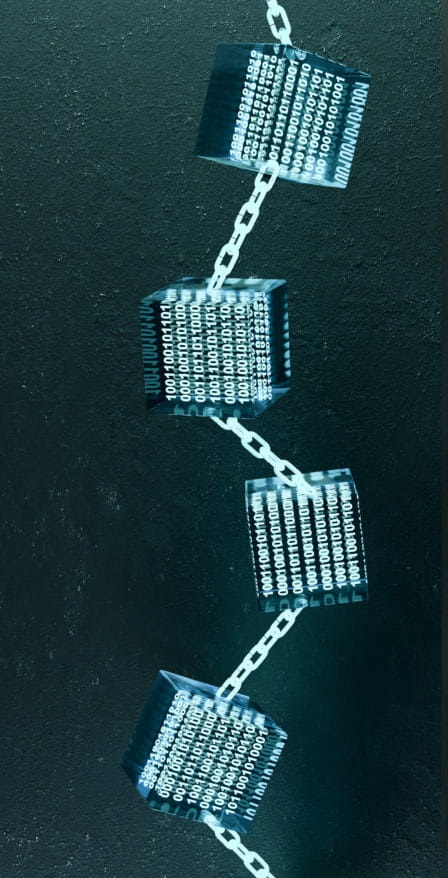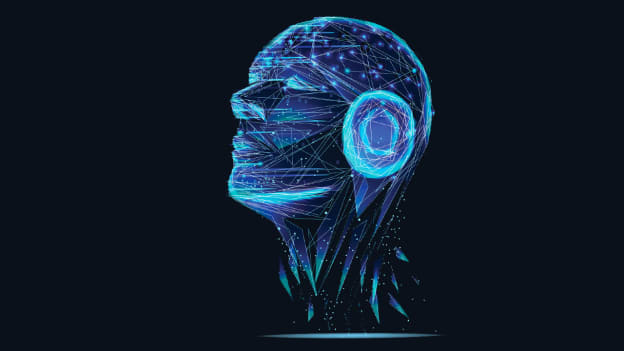
The Problem
Centralized authentication systems are lacking in security and diversification
With traditional authentication mechanisms, organizations store personal identifiable information on centrally managed servers and systems. As a result, users must put faith in these organizations to adequately protect their sensitive data.
In theory, this practice is acceptable until these organizations misuse user data, are compromised by insider threats, or are hacked by attackers that target centrally managed authentication systems.
A Potential Solution
A decentralized database relying on cryptography to ensure data integrity
Think of a ledger that maintains multiple copies of itself, all of which automatically update in unison. If one copy is tampered with, all other copies could highlight this discrepancy so that the database could be resynchronized—and therefore secured—before continuing. Not only would this prevent unauthorized access of the database but it also maintains the integrity of the data by ensuring it hasn't been tampered with.


Blockchain Basics
Blockchain technology is essentially a database or ledger that maintains copies of itself that are stored across multiple devices (ie servers, computers, IoT devices) within a specific network. Each of these devices is a node.
The nodes hosting the ledger are distributed to varying extents so that they exist independently of one another. In order for updates to be pushed to the ledger, these nodes must verify the proposed changes. To do so, the majority of the nodes must agree that the proposed changes are legitimate.
Upon verification, the new data is packaged into a block that is crpytographically encrpyted and/or hashed. This secure block is then chained onto the end of the existing blockchain. Note that every block is immutable, meaning it cannot be changed once the block has been added to the chain.
Blockchain Security Features
Crpytographic Keys/Hashs
Only those equipped with a specific private key can decrypt (and encrypt) specific data. In cases where you care more about the integrity of the data as opposed to the content of the data itself, hashing can be used since this mechanism represents the authenticity of the encrypted data (akin to a fingerprint) without having to unencrypt it.
Merkle Trees
The output from one equation is the input for the next equation and so forth. The result is a chain of equations linked together. If any one equation is altered the entire chain is affected. This is the process behind hashing blocks which creates the chain itself & enables immutability.
Distributed Ledger
Centralized ledgers introduce a single point of failure since hacking a part of the network often allows you to breach other parts as well. By distributing the nodes away from a centralized entity it increases the difficulty of hijacking the entire network.
256-Bit Encryption
It would theoretically take the average computer multiple decades just to crack the cryptography algorithm protecting the blockchain.
Immutable History
Every action on the blockchain is recorded and cannot be reformed. An affordance of this immutability is that the integrity of the data is always maintained.
Byzantine Fault Tolerance
To add a block, 51% of the nodes must accept the new data as valid. Consequently, you would need to gain majority control of all the nodes in order to falsify data.

Potential Use Cases
- Secure User Credentials
Organizations could vastly improve their security and better protect user login credentials by transitioning away from centralized identity management. Switching to a decentralized model would instantly decrease the risk of an organization’s central database of user login information being stolen during mass data breaches. - Manage Digital Rights
Companies could improve the distribution of software keys and other software products by tying them to specific users on an immutable, decentralized ledger. - Reduce Organizational Bandwidth Burdens
An authentication blockchain eliminates the need for centralized, bandwidth-hungry authentication services by requiring processing requests to be distributed to the end users, ultimately lightening an organization’s bandwidth requirements. - Improve Data Retrieval & Big Data Analysis
Organizations could spend less time wrangling messy, uncleaned raw data when analyzing extremely large datasets since blockchain technology could ensure data purity due to hashing and the decentralized fault tolerance. - Secure Internet of Things Devices
Decentralizing a smart network makes any associated IoT devices less vulnerable to centralized attacks. Therefore, securing both IoT data in motion and at rest.
What Smart People are Saying
Blockchain Python Playground
Now that its clear what blockchain is, how it works, what it can be used for, let's take a look under the hood to gain a deeper understanding of the technical mechanics that give blockchain its unique affordances. The below example is for an authentication use case, but could be modified for other use cases.
-
Create a Block class
-
Encrypt each attribute in the Block class
-
Create a Chain class using Block objects
-
Add a block to the chain
-
Add conditional logic to verify the authenticity of blocks on the blockchain

Ethical/Social Implications
Like with any emerging technology, it’s important to consider what blockchain is capable of doing and what the consequences are in the event of widespread adaptation.
- Energy Consumption
Blockchain tends to be computationally expensive. A widespread adaptation of blockchain for authentication could result in far greater demand of energy and computational resources. - Reliance on Encryption
Blockchain for authentication is reliant on SHA 256 hashing. If this encryption algorithm were somehow compromised, it could prove difficult to quickly patch the vulnerability due to the requirement of a majority consensus for change adoption. - Digital Jurisdiction
A widely adapted decentralized blockchain network would possibly see nodes all around the planet in various countries. How would procedures be created to ensure the legal operation of these nodes in multiple countries? Are there concerns regarding the equity of this technology if being a citizen of a certain country prevents somebody from using it?
Next Steps
During the course of this exploratory investigation into blockchain technology for purposes of authentication, we began to notice the immense breadth of the topic. The technology itself, its present and future implications; there is simply so much to unpack. We set out to explore this topic, seeing as none of us prior knew much about blockchains outside of their connection to cryptocurrency. With the information we have collected and curated in hand, there are several avenues for further investigation that might be worth pursuing. A technical avenue might be further developing and implementing a blockchain across multiple devices. One could even attempt to further research a particular implementation of a blockchain and conduct of sort of cost-benefit analysis. Ascertaining the practical implications this technology may have in the future.
